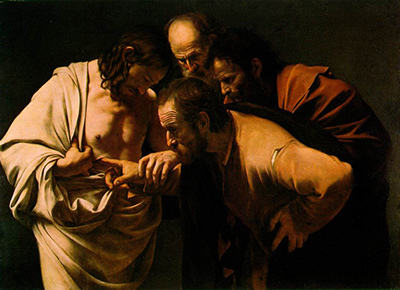Caravaggio was as outspoken and extrovert an artist as there has ever been
The combination of Caravaggio's own creativity plus his wild lifestyle ensures that controversial quotes from his life can be sourced, if only in a small supply.
Whilst Caravaggio's own life was not studied in anything like the same detail as notable Renaissance artists such as Michelangelo, Leonardo da Vinci and Raphael, there is still enough material available to get a good understanding of the man behind the art.
Much of this would be from third-party opinions of notable contributors of that period, as little or no literature was left behind by this master.
His hectic lifestyle was certainly not ideal for historians who would need to work hard to find any trace of his life beyond his groundbreaking paintings.
The main reason for the lack of background information on much of Caravaggio's later life was simply the fact that he was on the run from various authorities, thanks to several violent incidents which made him very much a wanted man.
Quotes by Caravaggio
I am always learning.
All works, no matter what or by whom painted, are nothing but bagatelles and childish trifles... unless they are made and painted from life, and there can be nothing... better than to follow nature.
I bury my head in the pillow, and dream of my true love... I am rowing to you on the great, dark ocean.
Amor Vincit Omnia (Love conquers all).
Quotes about Caravaggio
So then the painters in Rome were taken with this novelty, and the young ones in particular flocked to him and praised him alone as the unique imitator of nature; looking upon his works as miracles, they vied with each other in following him
Giovan Pietro Bellori, 1672, outlining how Caravaggio was essentially an early form of a rock star
In this painting there are but vulgarity, sacrilege, impiousness and disgust...One would say it is a work made by a painter that can paint well, but of a dark spirit, and who has been for a lot of time far from God, from His adoration, and from any good thought
A cardinal's secretary, describing The Grooms' Madonna (Madonna dei palafrenieri) painted by Caravaggio for an altar in Saint Peter's Basilica, Rome
What begins in the work of Caravaggio is, quite simply, modern painting.
André Berne-Joffroy, a 20th-century art historian
Caravaggio is the first artist in history whose paintings seem directly concerned with his own life. Ten years before Shakespeare invented Hamlet, Caravaggio painted Saint Francis in solitary dialogue with a skull. Caravaggio introduced soliloquy into painting at the same time that Shakespeare perfected it in drama.
John T. Spike
If Caravaggio were alive today today, he would have loved the cinema; his paintings take a cinematic approach. We filmmakers became aware of his work in the late 1960s and early 1970s, and he certainly was an influence on us. The best part for us was that in many cases he painted religious subject-matter but the models were obviously people from the streets; he had prostitutes playing saints. There’s something in Caravaggio that shows a real street knowledge of the sinner; his sacred paintings are profane.
Director Martin Scorsese in 2005
Caravaggio’s revolution was to treat biblical and mythological subjects with realism. He completely eschews idealization. That runs completely counter to the tradition of his day. He is also a very great storyteller. He’s brilliant at digesting the stories and picking the moment that encapsulates the story
Dawson Carr, curator of Caravaggio Retrospective at the National Gallery, London
His deviant sexuality, apparent atheism, and social transgressions fit the romantic image of the rebel artist epitomized in Paul Verlaine’s Les poètes maudits of 1884, just as his work seemed to foreshadow that of Delacroix, Courbet and Manet
Genevieve Warwick, Caravaggio: Realism, Rebellion, Reception




